Ticker for February 16, 2006
MESONET TICKER ... MESONET TICKER ... MESONET TICKER ... MESONET TICKER ...
February 16, 2006 February 16, 2006 February 16, 2006 February 16, 2006
A Rather Discontinuous Discontinuity
With today's cold front blasting into our consciences, uh ...
consciousnesses, uh ... with today's cold front really grabbing our
attention, perhaps we can spare a minute to pay homage to last night's
warm front, which was quite quirky in its quickness and quizzical
qualities before being quashed by the cold front's southward quest.
First of all, it showed a cold-front-like rapid attack at several
Mesonet stations. Check out the Kingfisher meteogram, where temps
dew points rocketed upward by 25 degrees in just a few minutes:
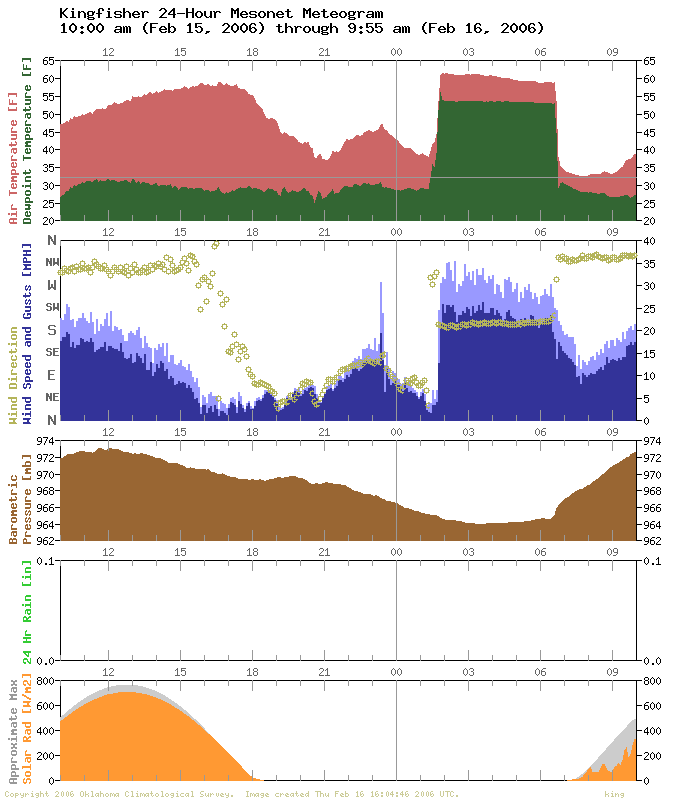
Secondly, notice the behavior of the windfield as the warm moist
sector got its act together and overtook Byars and Vanoss:
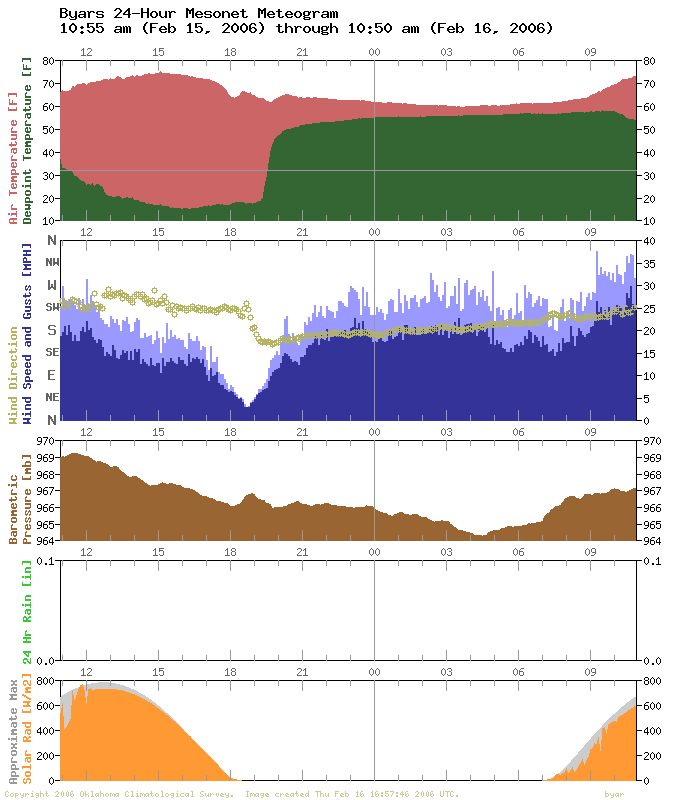

Byars, the more westward station, saw pronounced minimum in the
wind field, while Vanoss, just a few (and we mean few) miles to the
east, saw a very consistent wind.
This scenario played out at several neighboring dyads in south-central
Oklahoma, most strongly at Pauls Valley and Sulphur:
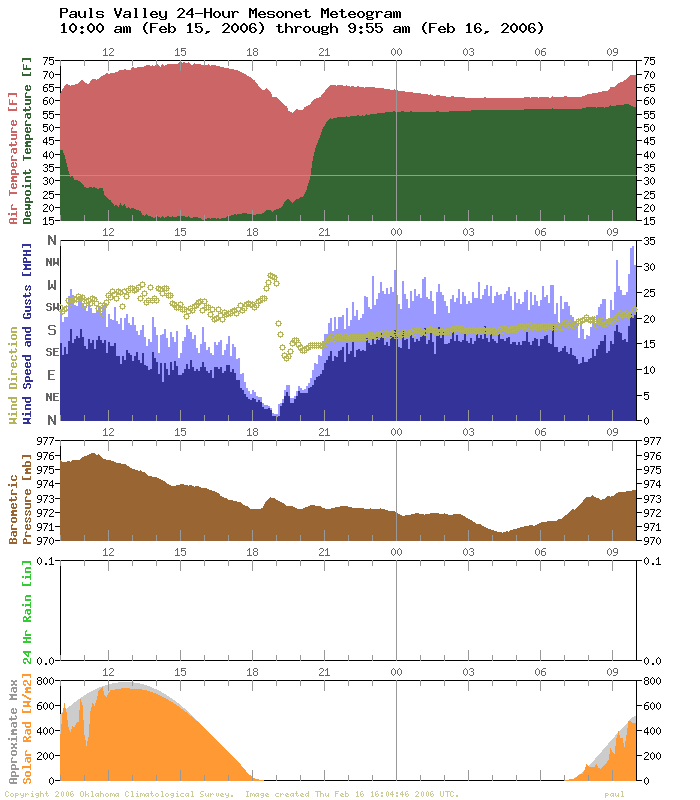
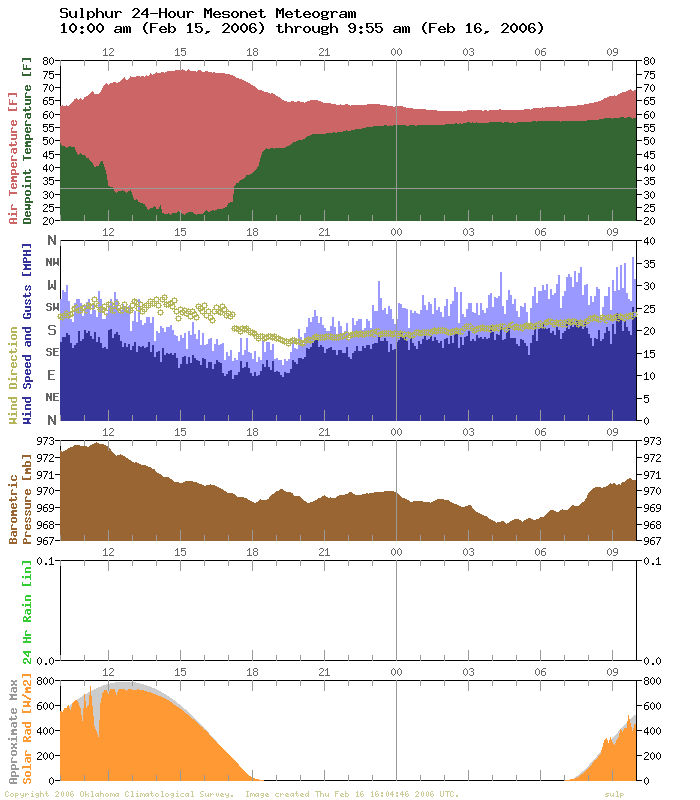
Also, notice how the warm front gave folks in Burbank a few precious
hours of humidity before being scrubbed clean by the cold front:
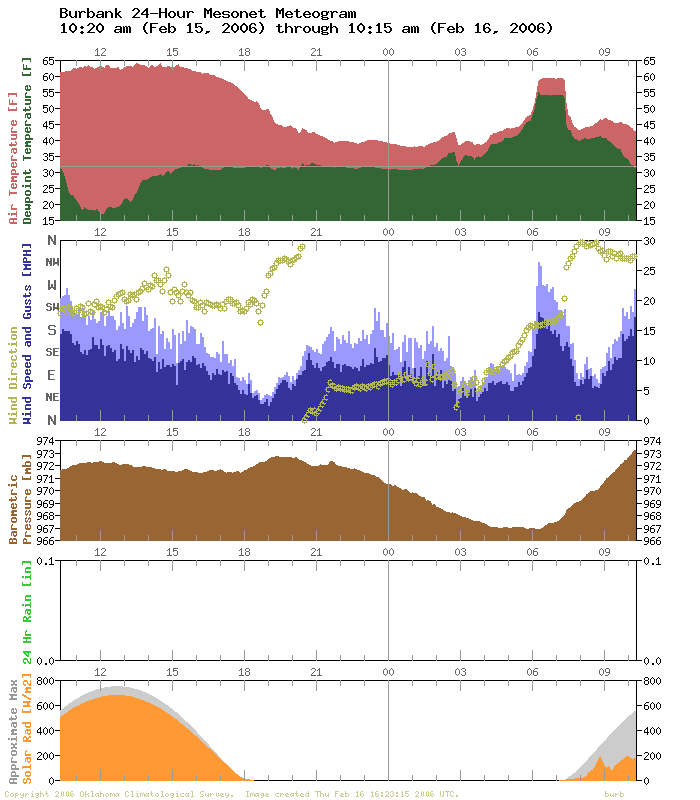
Folks at nearby Blackwell weren't so lucky. They never got a taste:

Pictures Of the Warm Front's Strength!
Take a look at the following pictures of a parking lot in Norman:
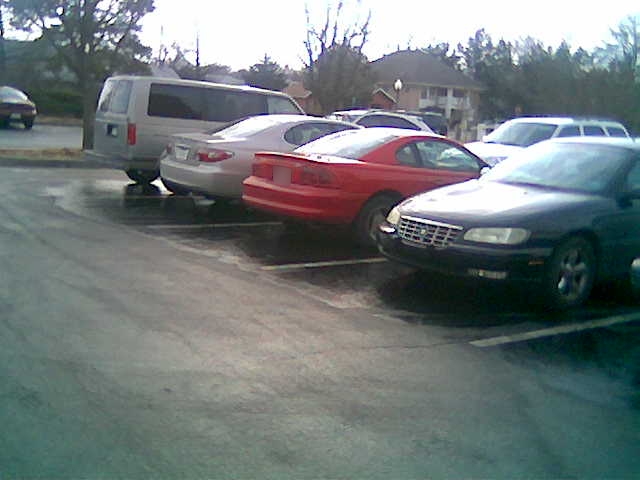
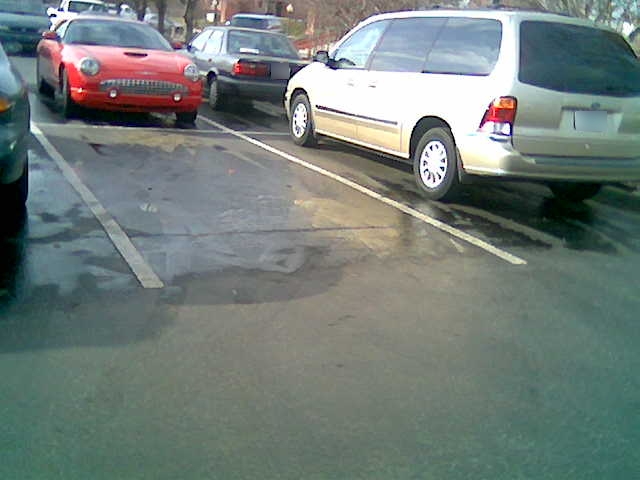
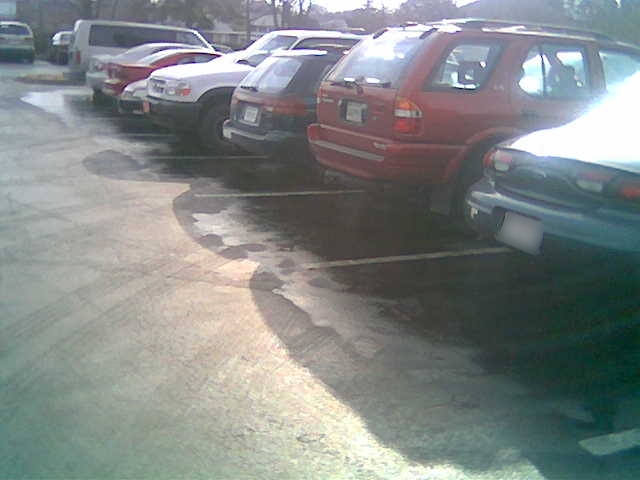
Notice the wet pavement under the cars? In the second pic, you can
even see wet pavement where a recently-departed car once sat. This,
of course, is condensation brought about by the rapid overnight push
of the warm front. Take a look at the weather map at about the time
these pics were snapped:
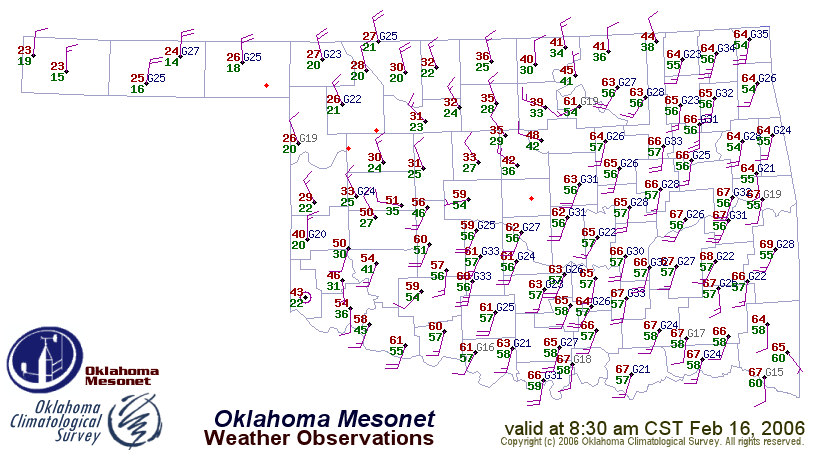
See the 56 degree dewpoint at Norman? Now take a look at soil temps
at about the same time:
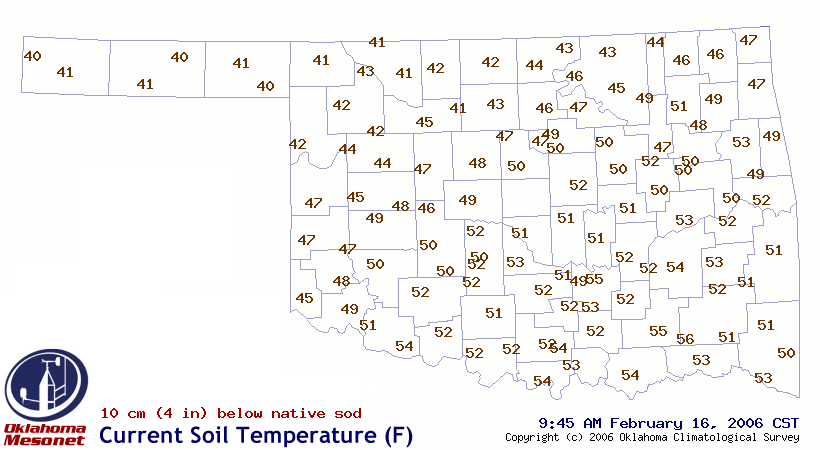
There's a 51 degree soil temperature four inches below the surface at
Norman. The overnight upward surge in dew point outpaced the chilly
soils, and water vapor condensed. But why only under the cars?
Now, the pavement isn't four inches deep, and it ain't made of soil,
either. So the surface temperature at the parking lot was probably
much closer to 56. The cars, however, protected their patches of
pavement from the evaporative contribution of the sun, allowing water
molecules to survive on the surface.
February 16 in Mesonet History
| Record | Value | Station | Year |
|---|---|---|---|
| Maximum Temperature | 85°F | HOLL | 2011 |
| Minimum Temperature | -22°F | NOWA | 2021 |
| Maximum Rainfall | 3.37″ | TALI | 2008 |
Mesonet records begin in 1994.
Search by Date
If you're a bit off, don't worry, because just like horseshoes, “almost” counts on the Ticker website!